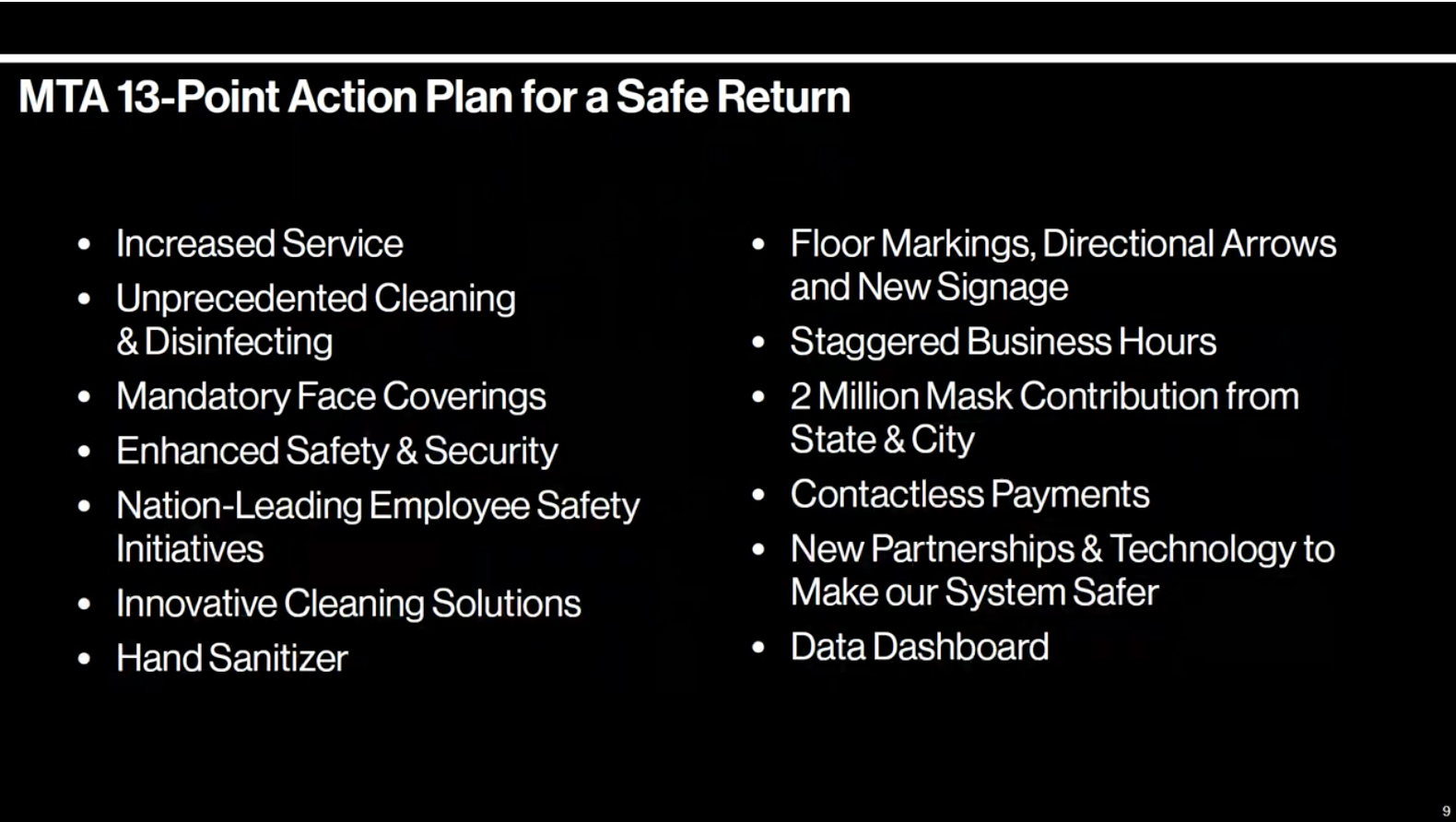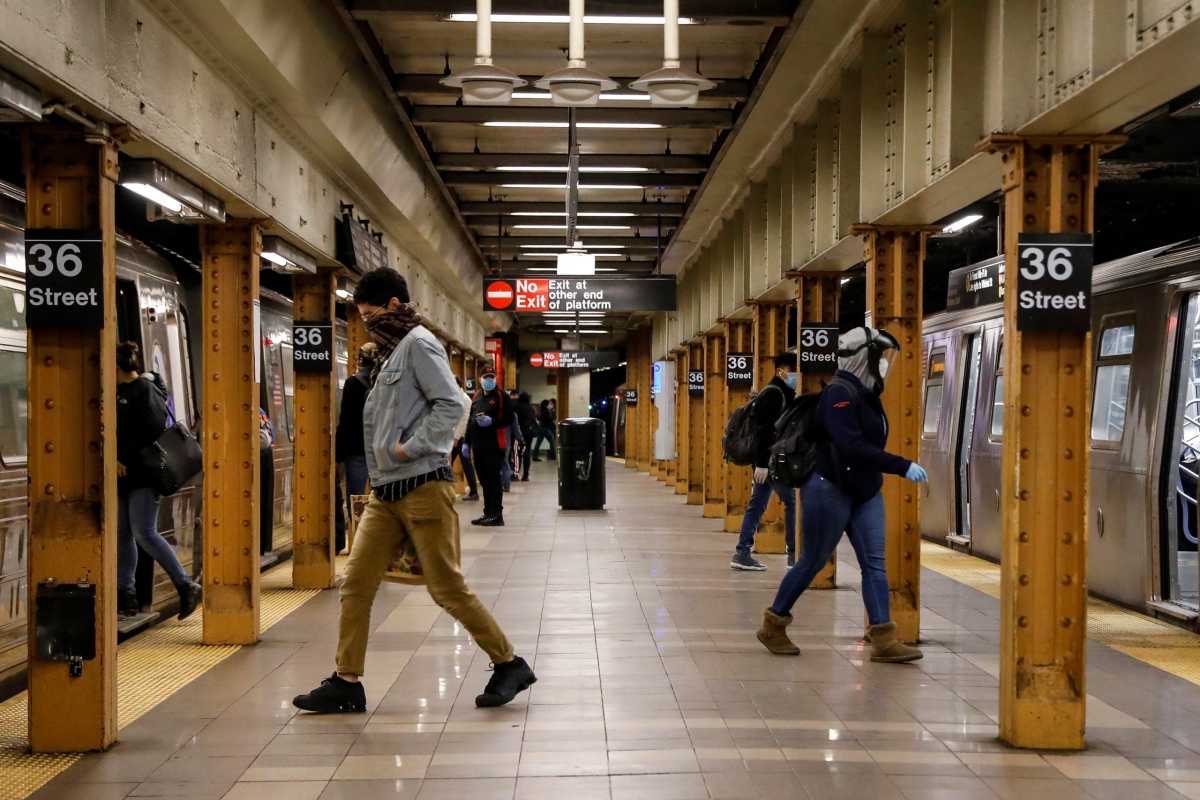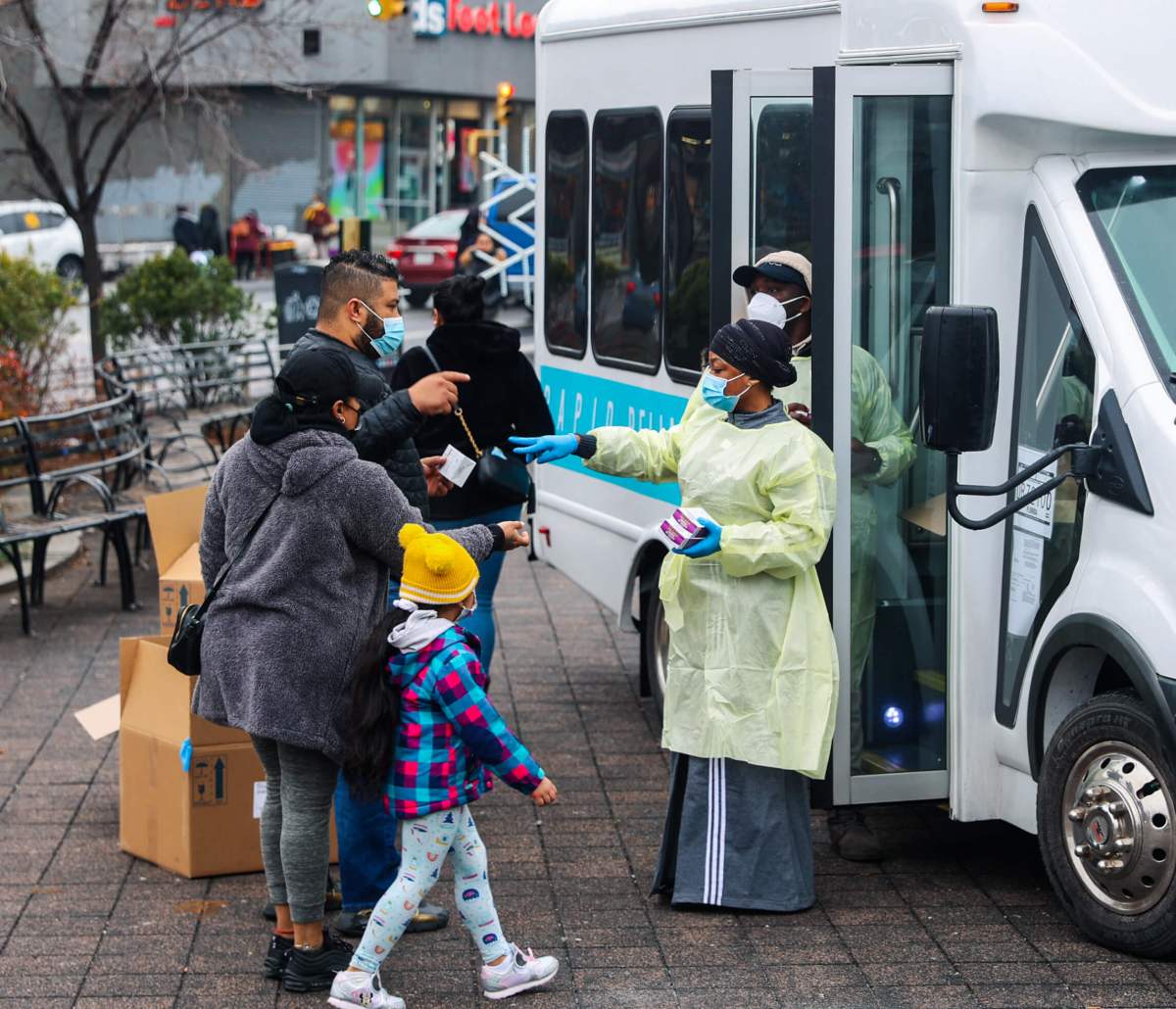Regular subway and bus service will return to New York City on Monday as the five boroughs launch the first phase of reopening during the COVID-19 pandemic.
MTA officials outlined the extensive, 13-point plan to get the anticipated 400,000 New Yorkers returning to work on June 8. It includes not only a continuation of the extensive cleaning and disinfecting programs the MTA began at the start of the crisis in March, but also various measures designed to keep riders and transit workers alike safe from infection.
“The MTA has always been the circulatory system of downstate New York,” MTA Chair and CEO Pat Foye said during a press conference on June 5 at Grand Central Station. “Before COVID-19, ridership was steadily increasing, and we were well-positioned for future gains in ridership. On average, between NYC Transit, Metro North and Long Island Rail Road, we were carrying 8.3 million customers per day.”
Then the nightmare of COVID-19 hit New York City, with the first official case reported March 1, followed by the first official death 13 days later. More than 200,000 New Yorkers in the five boroughs contracted the illness, killing more than 17,000 of them. The MTA lost more than 100 employees to COVID-19.
The contagion’s quick spread forced New York state into PAUSE, closing most businesses and cancelling large gatherings. Ridership on the city’s subways and buses plummeted by 90% at the peak of the crisis in late March and early April, forcing the MTA to introduce an “Essential Service” transit schedule that reduced overall service while keeping essential workers moving.
But as the pandemic eased in New York City, subway ridership crept back upward, with about 1.5 million commuters using it every day, according to Foye.
When New York City reopens Monday, acting New York City Transit President Sarah Feinberg said, so, too, will most regular subway and bus service restored for the morning commute. Buses in Brooklyn, the Bronx and Queens will be back to normal service, while Manhattan buses will run at 75% their normal, pre-pandemic schedule.
“It’s clear that mass transit will be critical during this process as hundreds of thousands of New Yorkers return to their offices,” Feinberg said.
Increasing service is the first of the 13 steps the MTA is climbing toward getting New York back up and running this Monday. Foye said these measures are necessary toward restoring public confidence that the transit system is not only running as normal, but is also safe.

The MTA will continue its stringent cleaning and disinfection program, including overnight shutdowns of the subway and bus systems. All passengers and MTA workers must wear masks. Hand sanitizer dispensers will be available for commuters.
Each subway station will have special decals and signage to direct customers to safely navigate the system and socially distance. Two million masks will be distributed to commuters during the first week.
If you’re going to use public transit, Feinberg said, you’ll need to wear a mask. Additional police — including NYPD and MTA officers — will patrol the stations to help ensure that all are complying with the mask order Governor Andrew Cuomo established in April.
“For anyone who shows up this week and forgot their mask,” Feinberg said, “go to the station booth or a volunteer in the station and ask for a backup mask. There will also be vendors in or around the stations who will be happy to sell you the masks at a low cost.”
Even the contactless OMNY (One Metro New York) payment system rollout is being expedited even further to be completed by the end of 2020.
Foye said the MTA has consulted with business leaders across the five boroughs and encouraged them to hold staggered office schedules, thereby reducing the number of commuters heading to and from work at a given time — and taking the pressure off a transit system getting back on its feet.
The MTA expects subway ridership will increase to about 15%, and bus ridership to up to 40%, during the first phase of reopening.
When the city finally gets through Phase 4 of reopening — which is still months away — Foye projects that subway ridership will be at about 70% of the pre-pandemic level, with bus ridership close to 90%.
By then, Foye expects that level of service would resolve many of the economic problems the MTA has faced since the crisis began. Having already received billions in federal dollars through previous COVID-19 relief packages from Washington, he charged that the authority needs another $3.9 billion to address the staggering deficit resulting from the plunge in pandemic ridership and increase in maintenance and cleaning costs.
“Strong and robust public transportation will be critical in the nation’s business districts to revitalize the country’s economy,” Foye said. “Anything less [than financial help from Washington] would be a disservice to the essential workers who have relied upon mass transit during this crisis.”
Visit new.mta.info/coronavirus for the full details of the reopening plan.



































